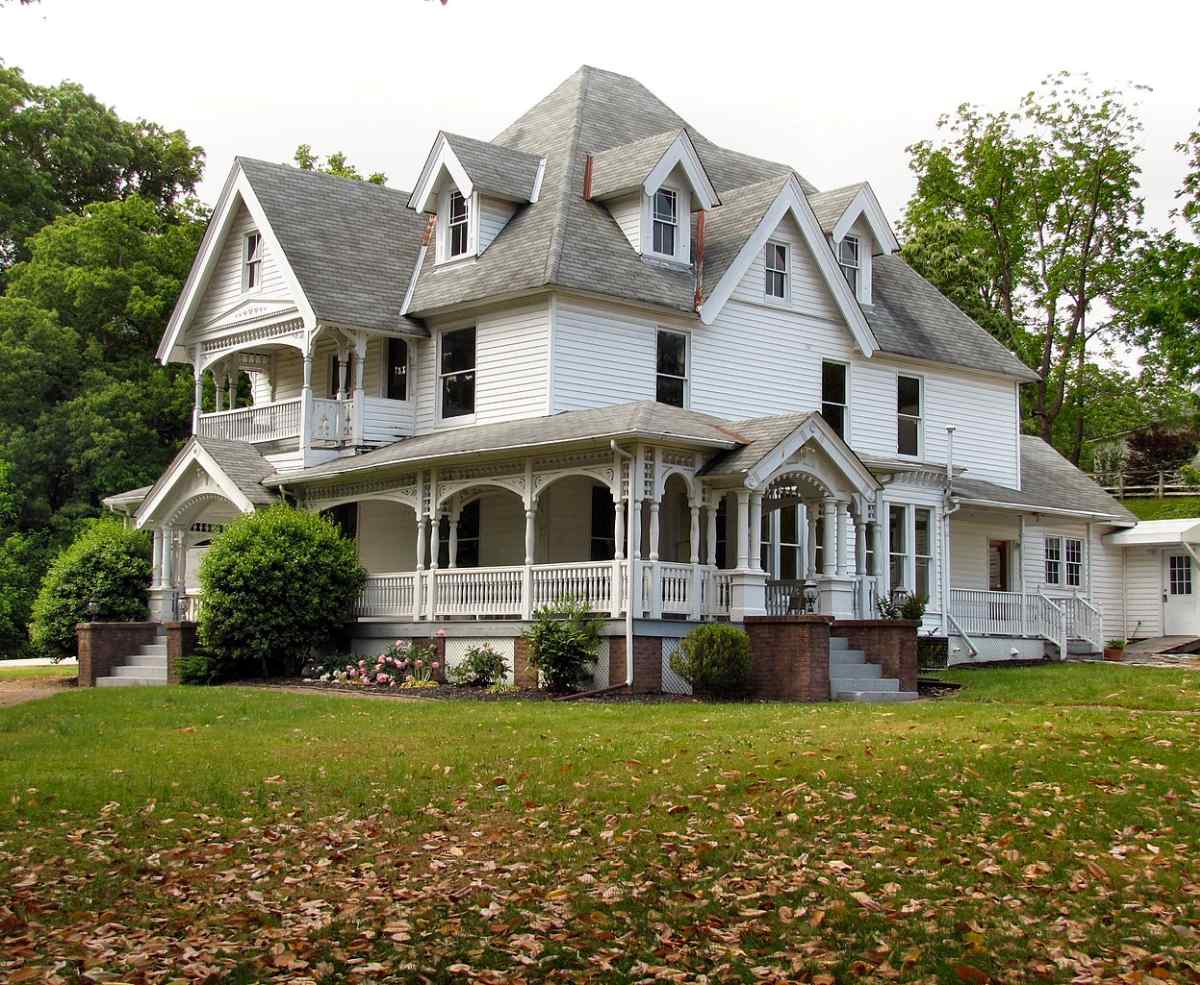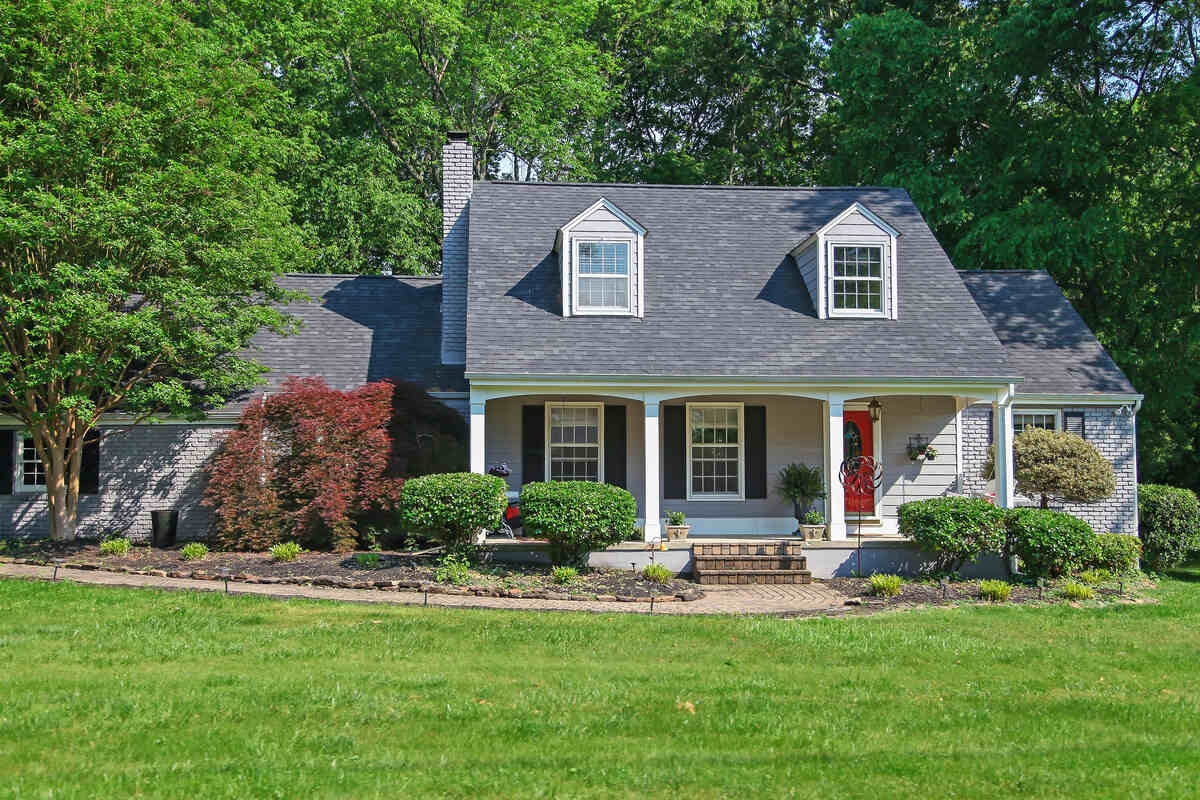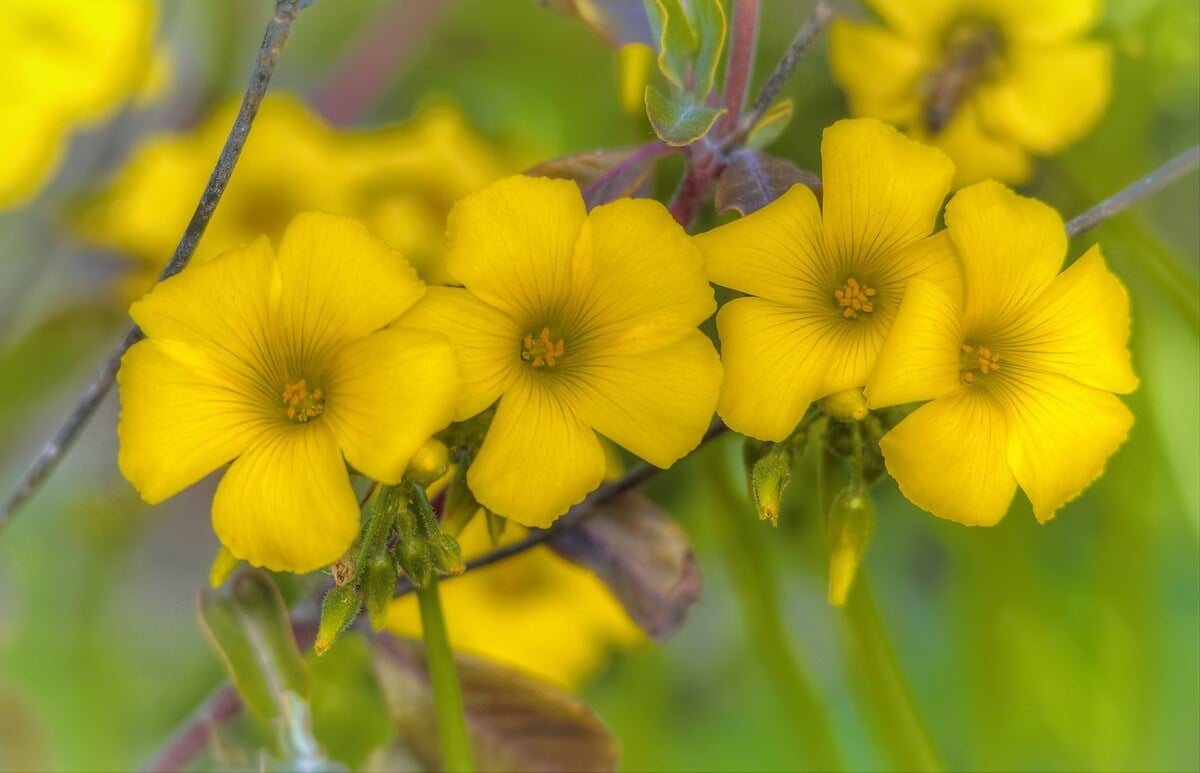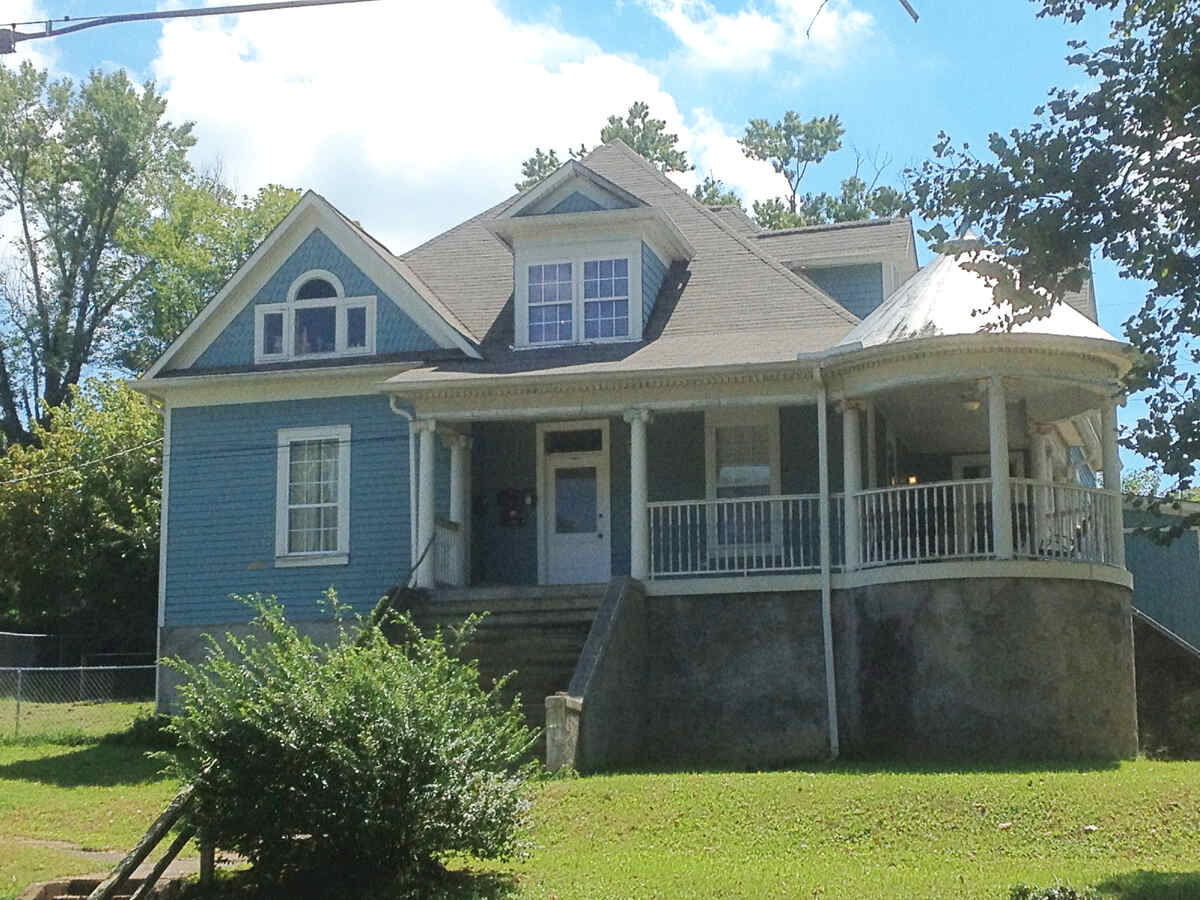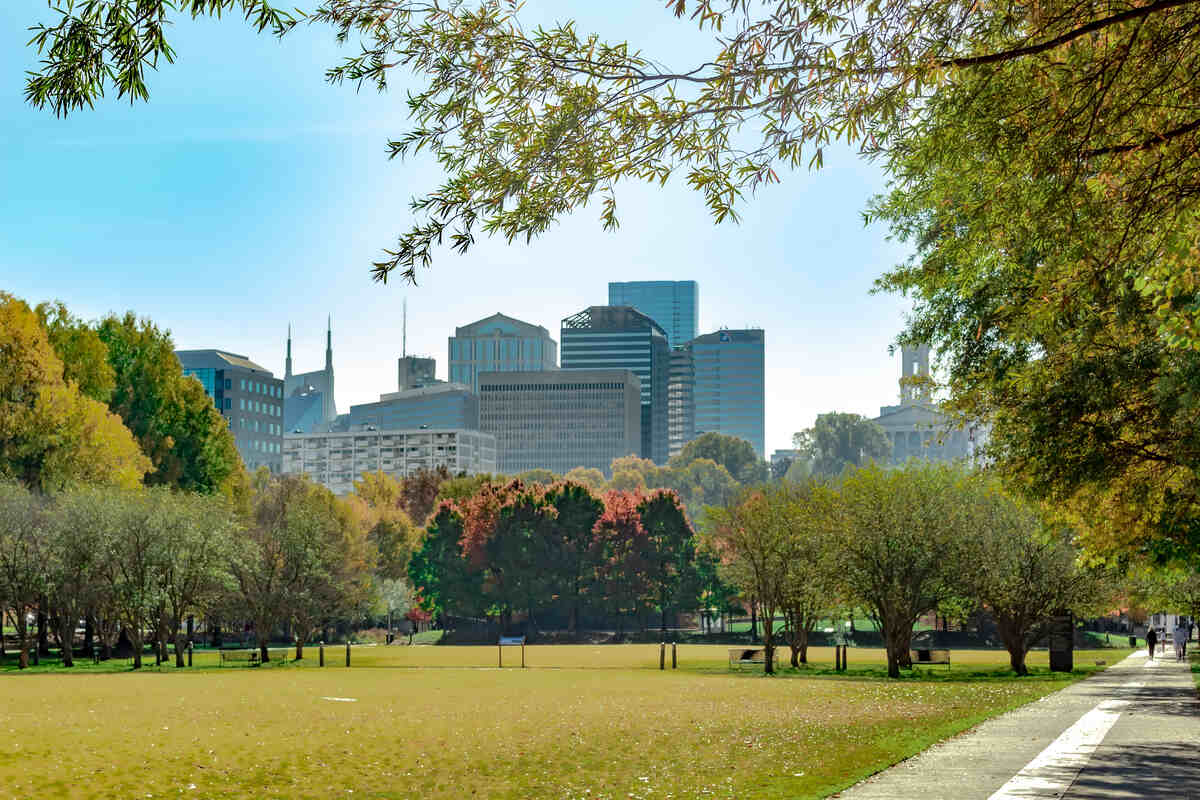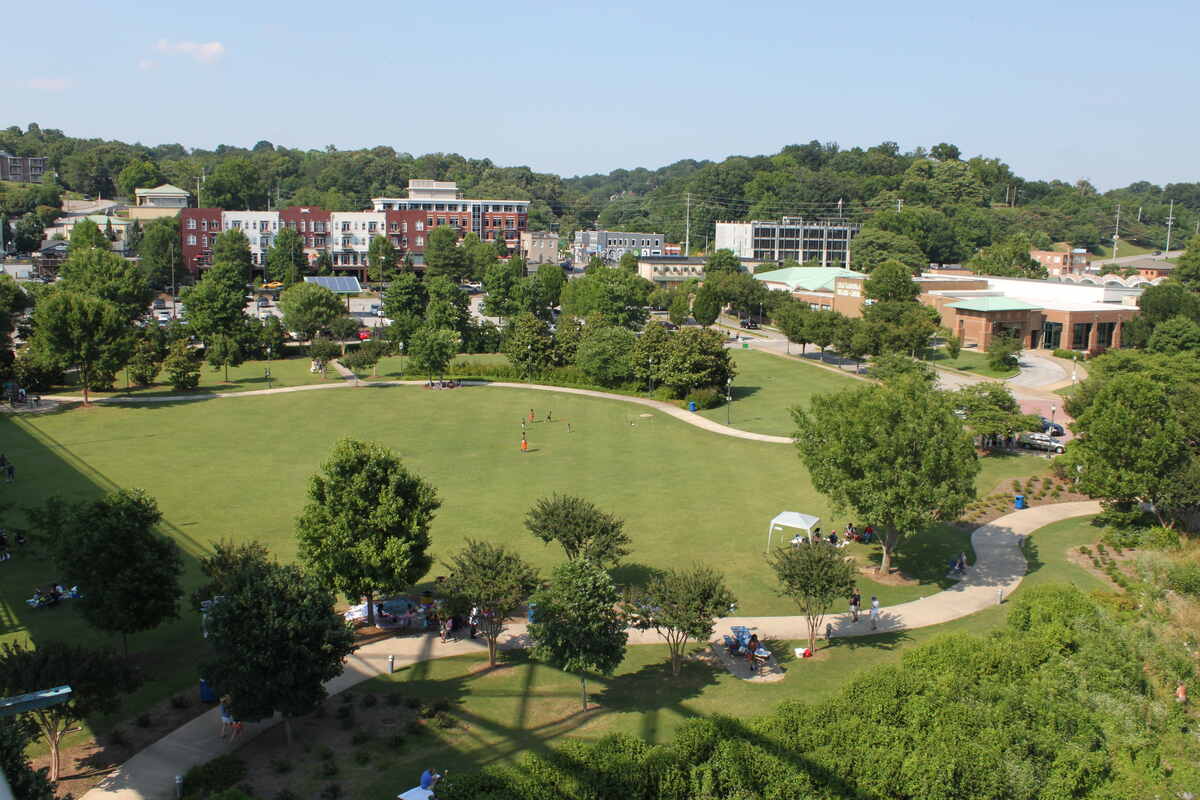
MoonPies, miniature golf, and a UFO landing on Signal Mountain: What do all these things have in common? Chattanooga, TN. This city has many fun activities, but maintaining your lawn is not so fun since Chattanooga sits in the transitional grass zone. The struggle is real for homeowners who want to know the best grass types for Chattanooga.
In this transitional weather zone, hot summers are unsuitable for cool-season turfgrasses, and cold winters are too harsh for warm-season turfgrasses, so any grass you choose will require a little more TLC. We’ll show you which grasses work best and how to care for them to get the most out of your transition zone lawn.
If you’re looking for a short guide on how to choose the best grass for your Chattanooga lawn, we’ve included an overview at the end.
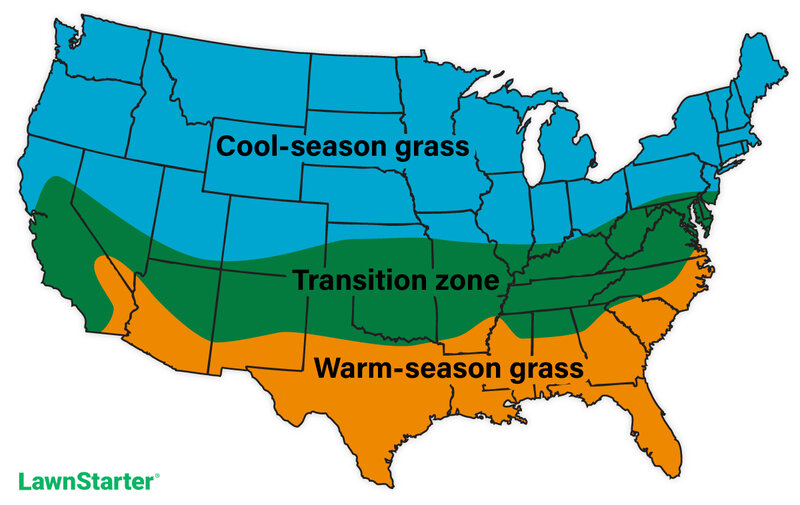
Tall Fescue

Aaron J. Patton, Ph.D. / Turfgrass Extension Specialist at Purdue University
Tall fescue is popular throughout Tennessee due to its heat, cold, and drought resistance. As a cool-season turfgrass, tall fescue grows most quickly during the spring and fall, so expect to mow most often during these times of the year.
This grass thrives in 6 to 8 hours of full sun daily. However, it can also tolerate partial shade. Tall fescue is most often installed during spring or fall to coincide with its two growing seasons.
- Classification: Cool-season grass
- Spreads by: Produces short rhizomes but has a bunch-type growth habit
- Shade tolerance: Moderate
- Drought tolerance: Moderate to High
- Foot traffic tolerance: Moderate
- Maintenance needs: Frequent mowing. Does not produce significant thatch.
- Mowing height: Set mowing height to 2 inches when the grass reaches 3 inches tall.
- Potential for disease: Tolerant of most diseases when adequately maintained.
- Soil pH: 5.5-6.5
- Soil type: Adapted to various soil conditions but prefers fertile clay soils with good drainage.
Other notes: One indicator that a lawn needs water is “footprinting.” Footprinting means your foot imprint will stay when the turfgrass is walked on. The turf will not bounce back quickly.
Grass Seed Options:
– Triple-Play Tall Fescue Grass Seed Blend (5000 sq ft)
– Eretz Kentucky 31 K31 Tall Fescue Grass Seed (choose your size)
– Pennington The Rebels Tall Fescue Grass Seed Mix (7 lb.)
Kentucky Bluegrass
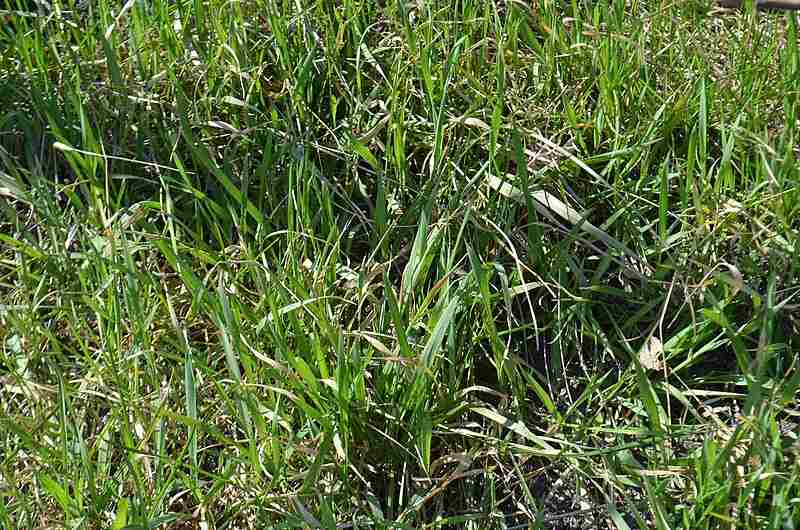
Photo Credit: Ethan2039 / Wikimedia Commons / CC BY-SA 4.0
Kentucky bluegrass is a popular cool-season turfgrass that thrives in the transition and cool-season zones of the U.S. However, it is originally from northern Asia, the mountains of Algeria and Morocco, and Europe. Its name comes from its distinctive blue-green color, which makes it easily recognizable.
Kentucky bluegrass thrives best in fertile, well-drained soils and prefers full sun or partial/dappled shade. Compared to perennial ryegrass and tall fescue, Kentucky bluegrass establishes slowly from seed.
- Classification: Cool-season grass
- Spreads by: Rhizomes
- Shade tolerance: Low
- Drought tolerance: Moderate
- Foot traffic tolerance: Moderate
- Maintenance needs: Moderate mowing frequency, and high fertilization needs.
- Mowing height: Set mowing height between 2.5 and 3.5 inches.
- Potential for disease: Moderate to high; prone to several diseases, such as dollar spot, leaf spot, necrotic ring spot, summer patch, and stripe smut.
- Soil pH: 6-7.5
- Soil type: Performs best in well-drained, heavy soils with high fertility.
Other notes: Forms a tight, dense sod, which is good for erosion control
Grass Seed Options:
– Jonathan Green (11970) Blue Panther Kentucky Bluegrass Grass Seed (3 lbs.)
– SeedRanch Midnight Kentucky Bluegrass Seed (5 lbs.)
– Jacklin Seed – Biltmore Blue Blend – 100% Kentucky Bluegrass (5 lbs.)
Bermudagrass
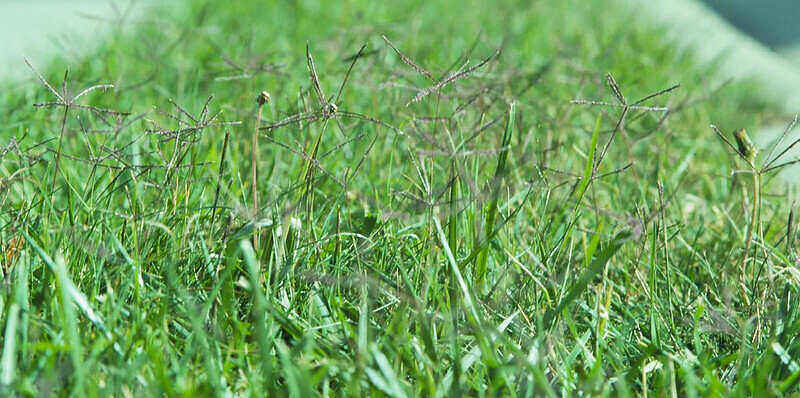
Photo Credit: Matt Levin / Flickr / CC BY-SA 2.0
Bermudagrass is used for sports fields and golf courses because it can thrive in full sun. But homeowners in Chattanooga have also discovered that Bermudagrass is a great lawn option. Its fast establishment, quick recovery from damage, and high drought tolerance make it attractive for active families who want a green lawn all summer.
One note of caution: Bermuda is a high-maintenance grass, so be prepared to put in time and effort to keep the lawn in top form.
- Classification: Warm-season grass
- Spreads by: Stolons and rhizomes
- Shade tolerance: Low; thrives in full sun
- Drought tolerance: High
- Foot traffic tolerance: High
- Maintenance needs: Needs frequent mowing due to fast growth rate; develops thatch easily; needs regular fertilization
- Mowing height: Set the mowing height between 0.5 and 1.5 inches for hybrid Bermudagrass cultivars. Mow common Bermudagrass down to 1.5 to 2.5 inches.
- Potential for disease: Good disease resistance, although diseases are common; low resistance to insects
- Soil pH: 6-6.5
- Soil type: Tolerates most soil types
Other notes: Bermudagrass is difficult to keep edged due to its invasive nature. Check out these tips on how to keep Bermudagrass out of flower beds to maintain a clear distinction between areas in your lawn.
Grass Seed Options:
– Pennington Bermudagrass Bare Spot (5 lb. bag)
– Pennington Smart Seed Bermudagrass Mix (8.75-lb. bag)
– Scotts Turf Builder Bermudagrass (10-lb. bag)
– Hancock Seed Co. Bermudagrass (50-lb. bag)
Zoysiagrass
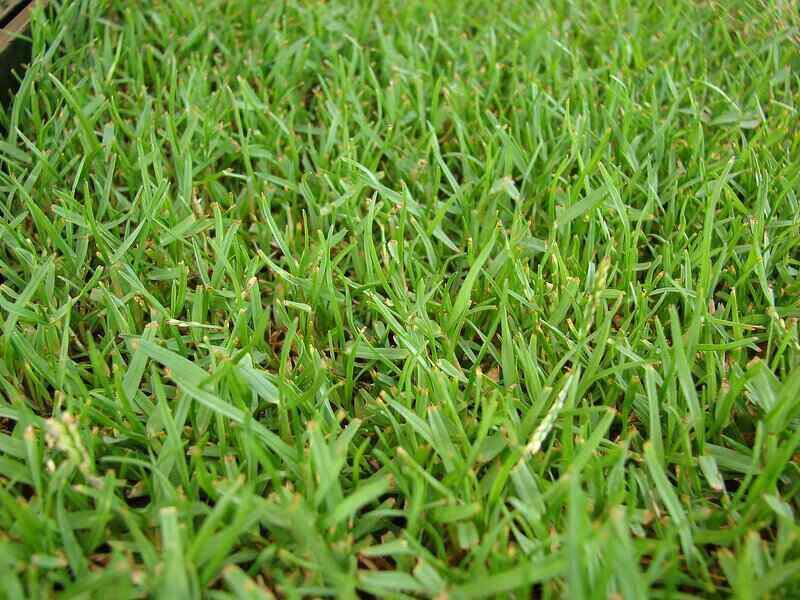
Photo Credit: Forest & Kim Starr / Wikimedia Commons / CC BY 3.0 US
Zoysiagrass is a popular choice for those looking for an attractive, dense turf that can flourish in full sun and will tolerate some shade. Zoysiagrass is relatively low-maintenance once established and has good wear tolerance for lawns with kids or pets. However, once wear occurs, it is slow to recover from damage.
If you want a lawn, you can seed, look elsewhere. Due to its slow growth habit, Zoysia should be established through sodding or plugging.
- Classification: Warm-season grass
- Spreads by: Stolons and rhizomes
- Shade tolerance: Moderate
- Drought tolerance: Moderate to High
- Foot traffic tolerance: High, but recovers slowly from damage
- Maintenance needs: Low nitrogen fertilization requirements, although it’s prone to thatch build-up.
- Mowing height: Set mowing height between 1 and 2 inches.
- Potential for disease: Good disease tolerance overall
- Soil pH: 6-6.5
- Soil type: Well-draining, some cultivars are more tolerant of a wide range of soils than others
Other notes: Be aware that grubs, fall armyworm, and hunting billbug can cause significant damage.
Grass Plug and Seed Options:
– Zoysia Plugs (50 Large Grass Plugs)
– Zoysia Plugs (50 Full & Lush Grass Plugs)
– Zoysia Plugs (100 Plugs)
– Zoysia Emerald Grass Seeds (1/8 lb. of seeds)
– Zenith Zenith Grass Seeds (1/8 lb. of seeds)
Honorable Mention: Ryegrass
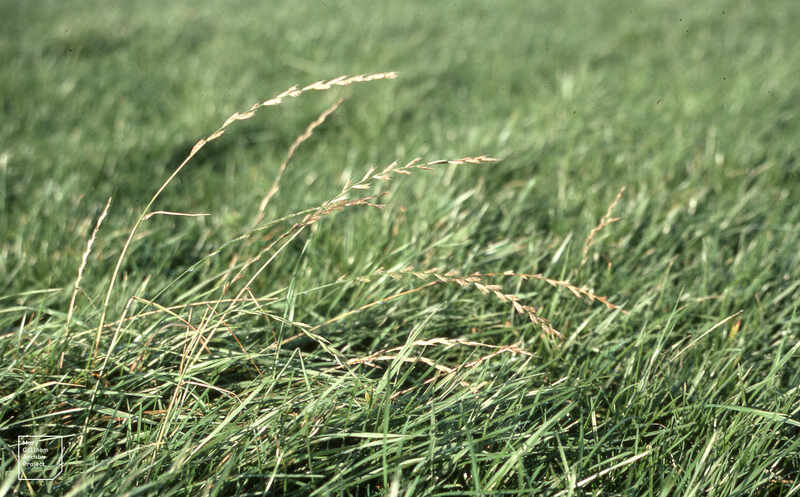
Photo Credit: Dr Mary Gillham Archive Project / Flickr / CC BY 2.0
Ryegrasses are not recommended to be mixed with slower-growing grass types as part of a permanent lawn in Tennessee. However, there are three varieties of ryegrass used for two temporary purposes in Tennessee:
Intermediate and perennial ryegrass:
- Mainly used to overseed Bermudagrass in the fall to provide winter color (only consider this process if you have a high-maintenance lawn).
- Overseeding with rye can be a DIY project if you are a “grass fanatic.” If you have a lawn crew maintaining your lawn, ask them to overseed your dormant Bermudagrass.
Annual ryegrass:
- This is used for temporary erosion control until permanent turf is installed.
- Classification: Cool-season grass
- Spreads by: Has a bunch-type growth habit
- Shade tolerance: Low
- Drought tolerance: Low
- Foot traffic tolerance: High
- Maintenance needs: Moderate mowing and fertilization requirements. Thatch is insignificant.
- Mowing height: Set mowing height to 1.5 to 2.5 inches
- Potential for disease: High. Common diseases include gray leaf spot, red thread, and leaf spot/melting-out.
- Soil pH: Can grow in soils with a pH between 5 and 8 but prefers between 6 and 7.
- Soil type: Prefers good drainage and fertility but can tolerate some poor drainage.
Other notes: In other states, ryegrass is sometimes used as a “nurse grass.” As the first to germinate in cool-season lawn mixes, it helps control erosion and weeds while slower-growing grasses establish.
Grass Seed Options:
– Outsidepride Perennial Ryegrass Seed (5 lbs.)
– Eretz ProTurf Perennial Ryegrass Fine Lawn Seed (choose your size)
How To Choose The Best Grass for Your Chattanooga Lawn
It’s important to choose the right turfgrass for your Chattanooga lawn. Watch how the sun travels across your lawn. Is your lawn in full sun, partial shade, or a combination? Are there any wet areas that hold water?
Drought Tolerance
To maintain a healthy lawn during drought conditions, choosing a turfgrass resistant to drought is imperative.
- High drought tolerance: Bermudagrass
- Moderate drought tolerance: Zoysiagrass, tall fescue, Kentucky bluegrass
- Low drought tolerance: Ryegrass
Shade Tolerance
The level of shade tolerance varies among different types of grass, so it’s important to evaluate whether your lawn gets full sun or if large trees are casting shadows. Observe how the sun moves over your lawn during different hours. By understanding the shade tolerance of your grass, you can choose the right type of grass for your lawn’s level of sun or shade.
- Low shade tolerance: Bermudagrass, Kentucky bluegrass, ryegrass
- Moderate shade tolerance: Zoysiagrass, tall fescue
Low Maintenance vs. High Maintenance
Your time is valuable, and your budget is important. For those with limited resources or a busy schedule, low-maintenance grasses can thrive with less attention and care, which makes them a great option.
On the other hand, high-maintenance grasses demand more time and more expense. Mowing, aeration, fertilizing, and watering can be time-consuming and costly.
- Low-maintenance grasses: Zoysiagrass
- Moderate to high-maintenance grasses: Bermudagrass, ryegrass, Kentucky bluegrass, tall fescue
Call in the Pros
If you’re looking to improve the health and appearance of your lawn, it’s important to choose the right grass for your area. Consulting a Lawnstarter lawn care professional in Chattanooga will get you started on creating a greener, healthier lawn.
Having peace of mind that you’re now in good hands, you can relax, eat your MoonPie, play miniature golf, and watch those UFOs fly circles in the skies above Signal Mountain.
LawnStarter participates in the Amazon Services LLC Associates Program, an affiliate advertising program. LawnStarter earns revenue from products promoted in this article.
Main Image Credit: Pxfuel
